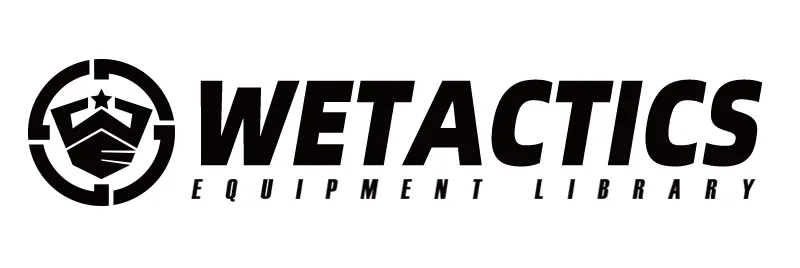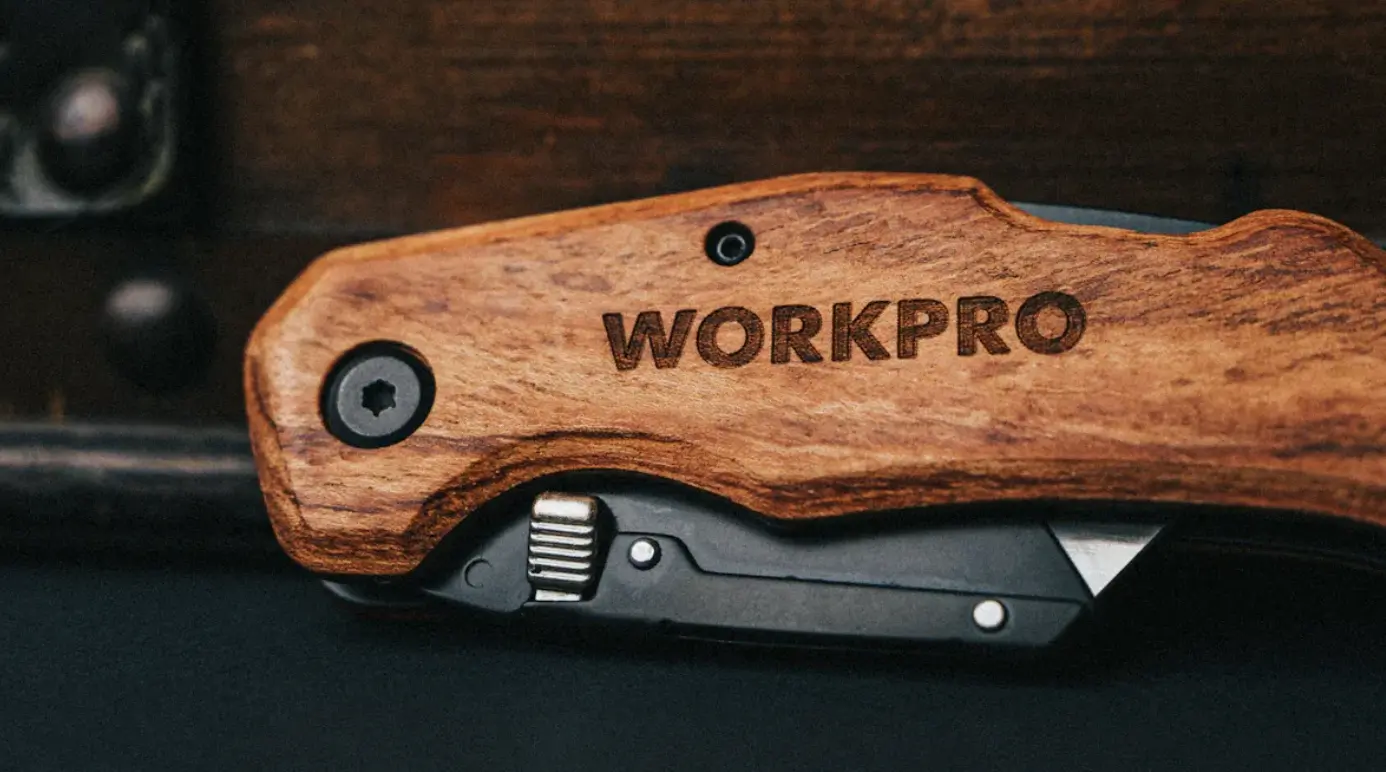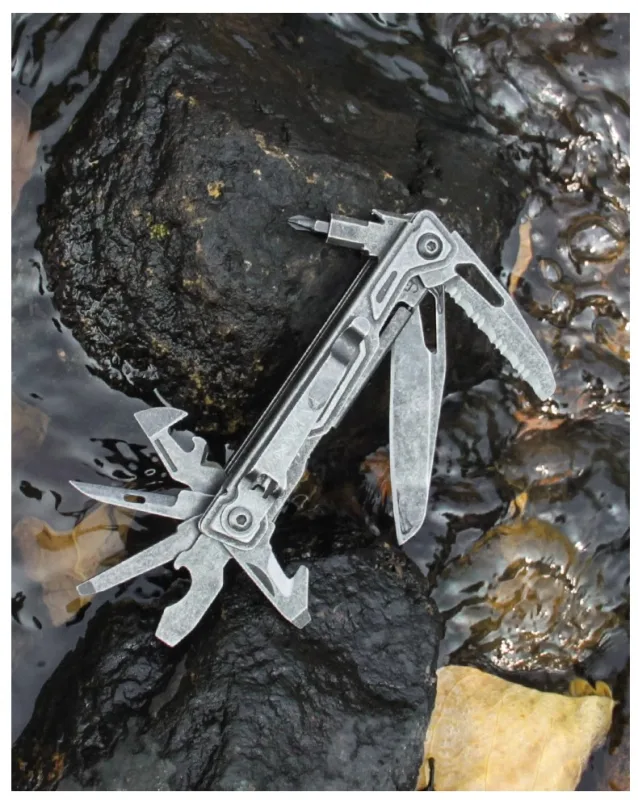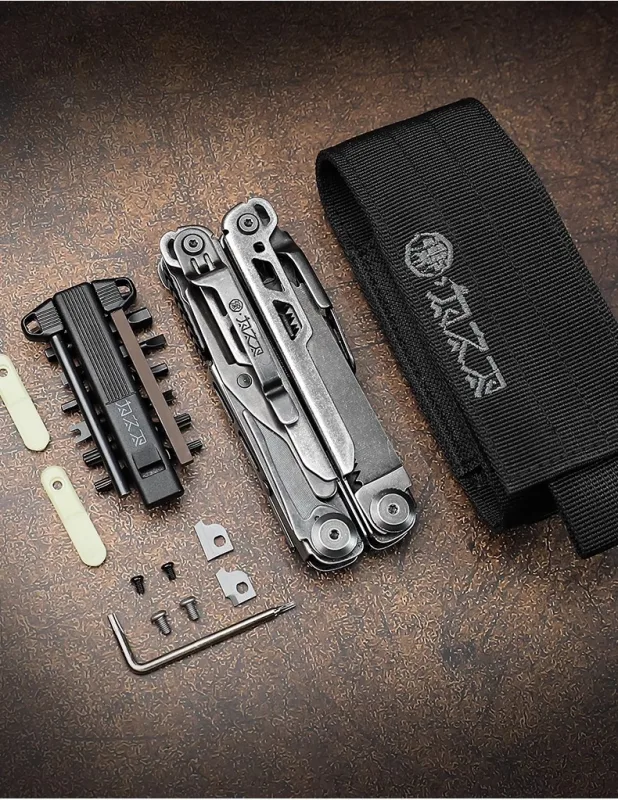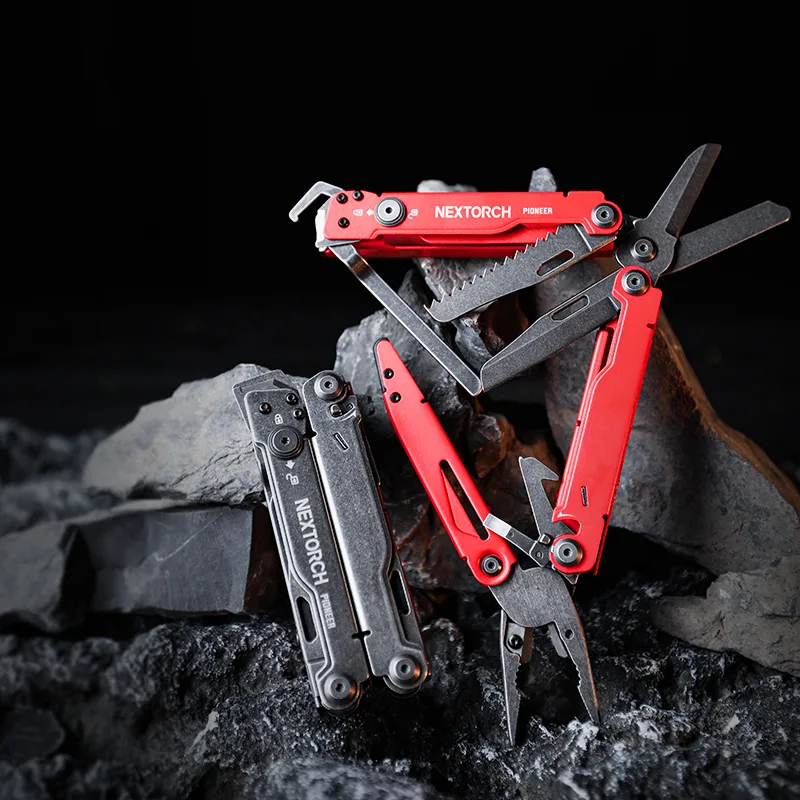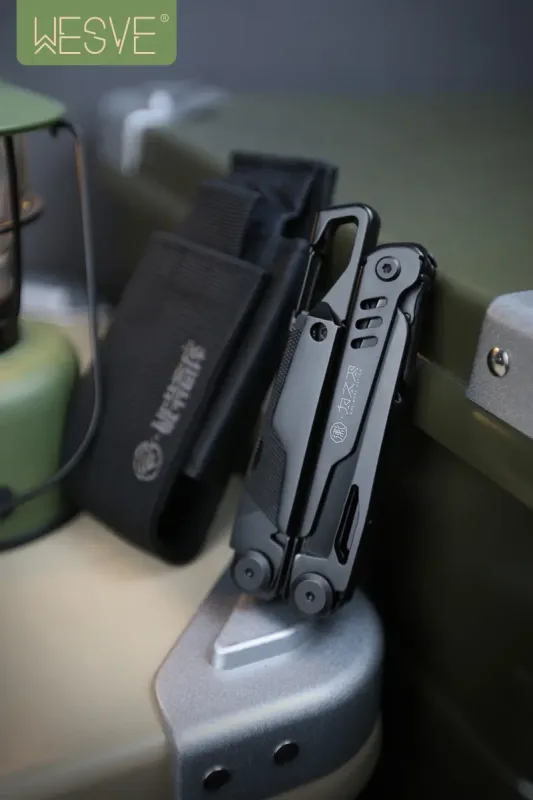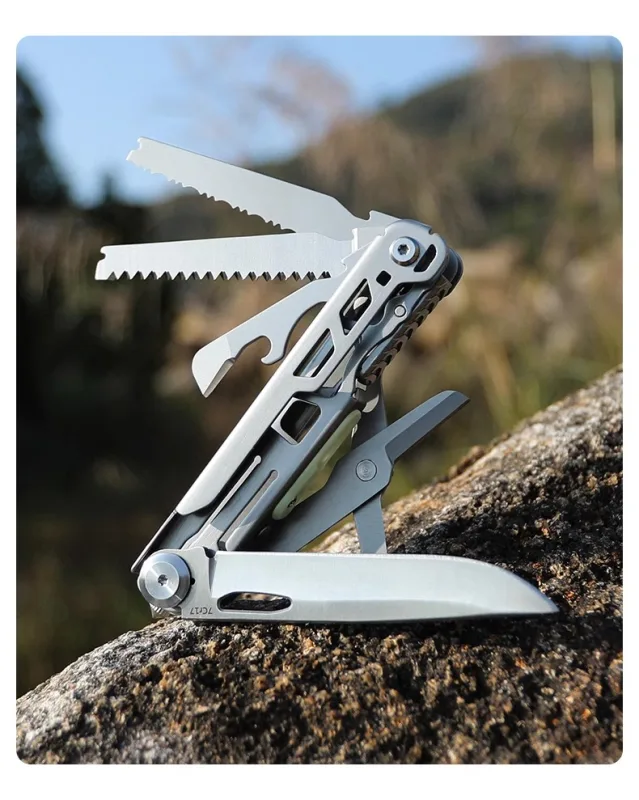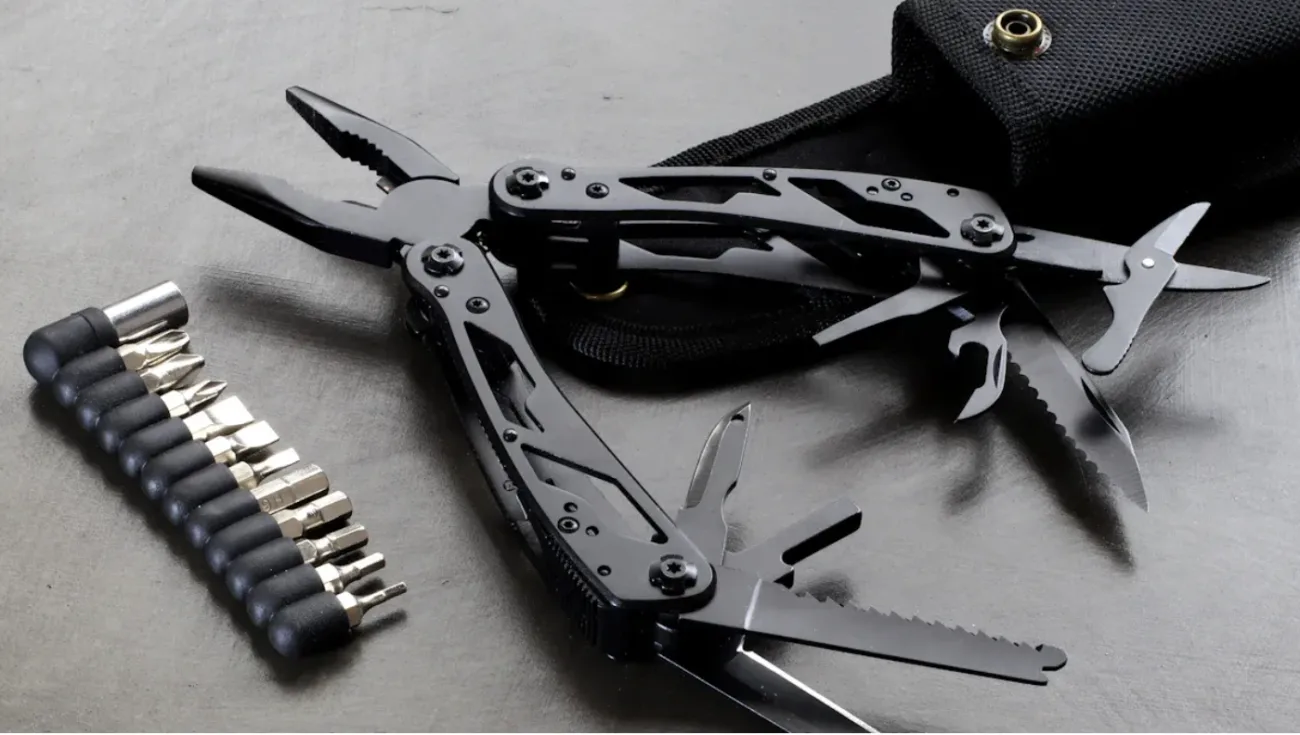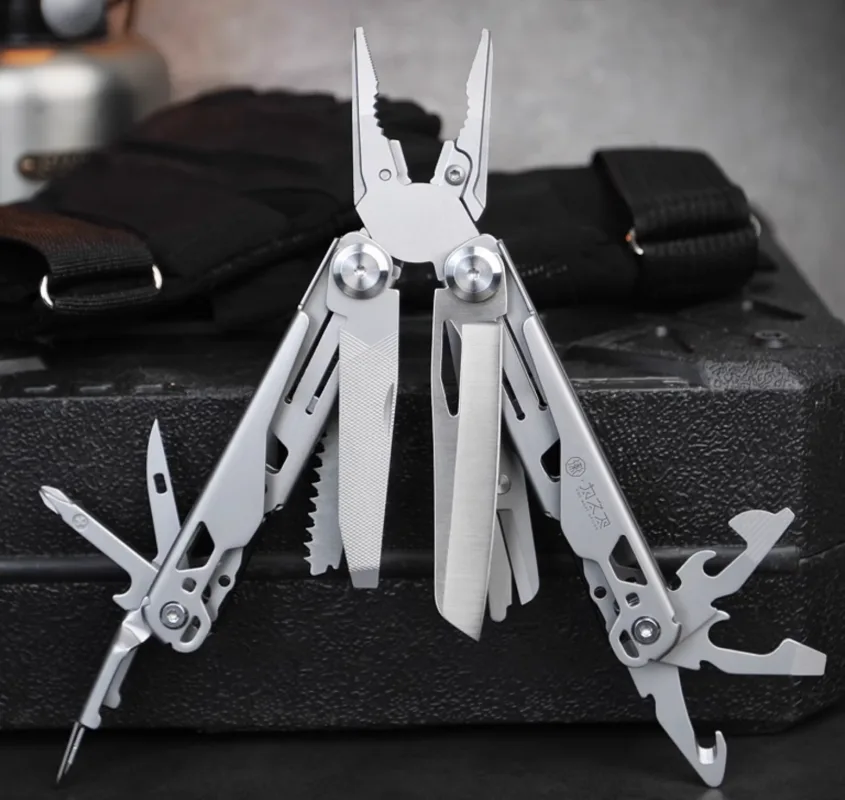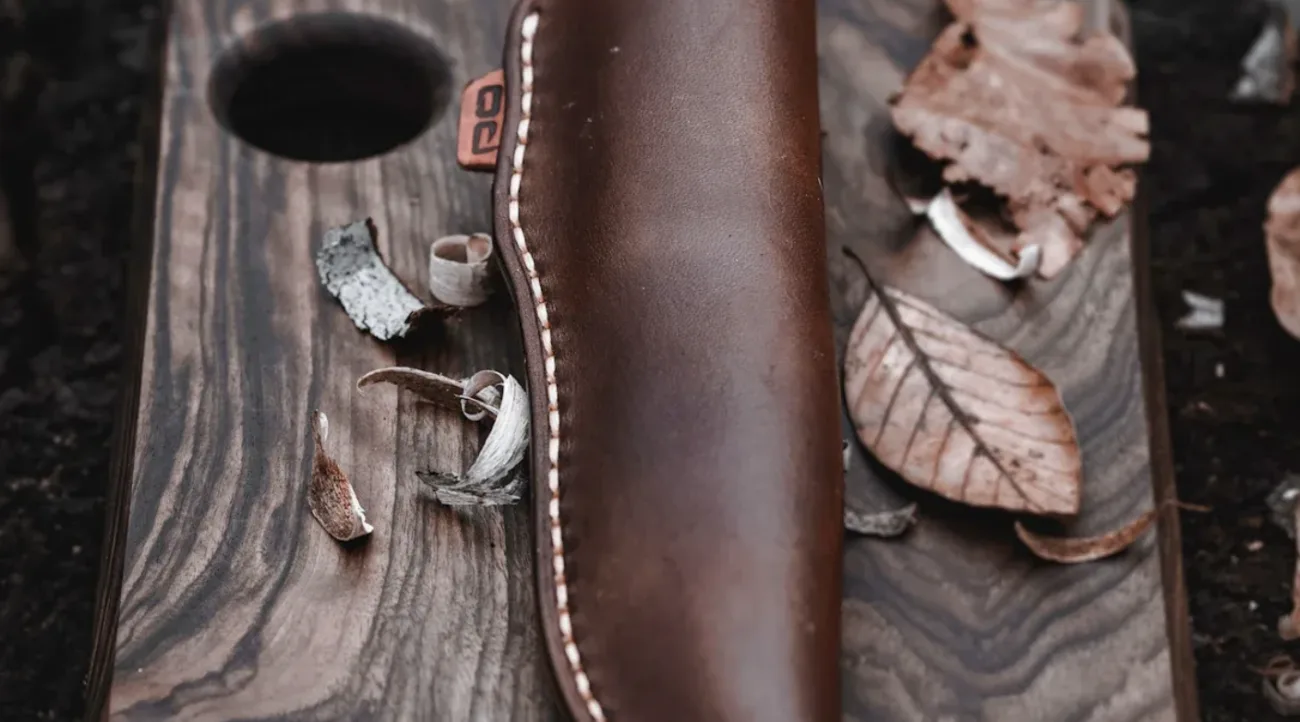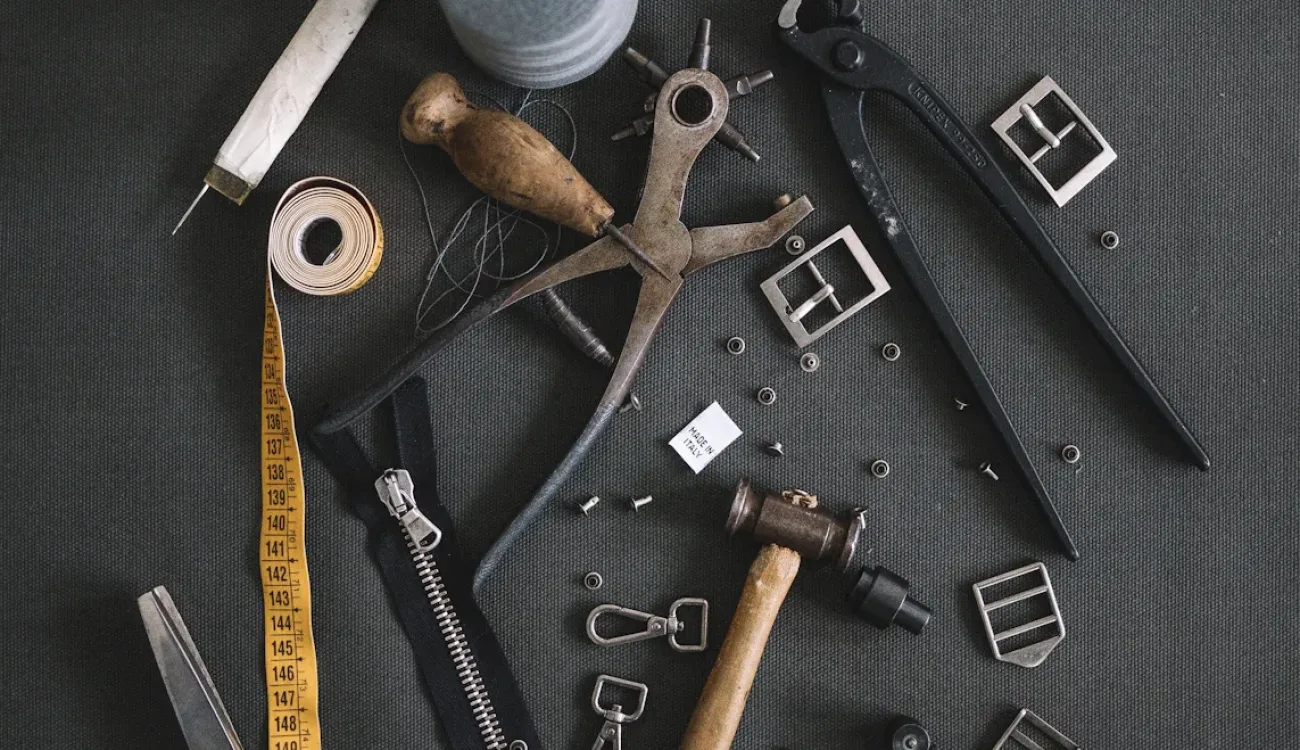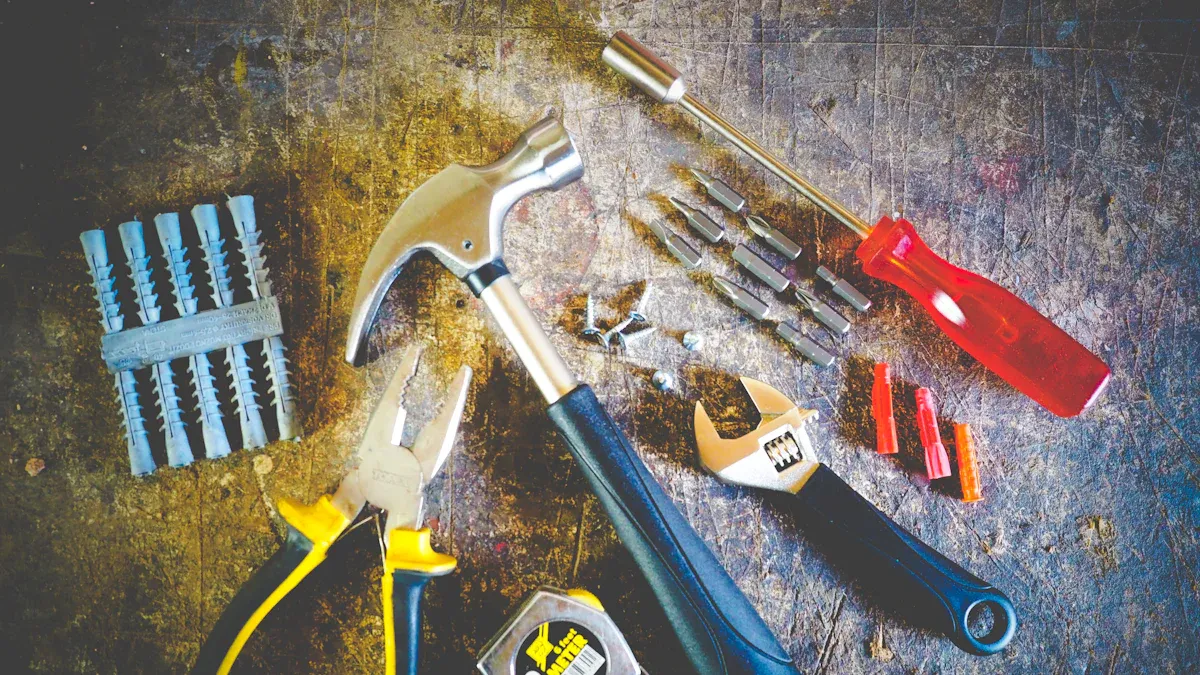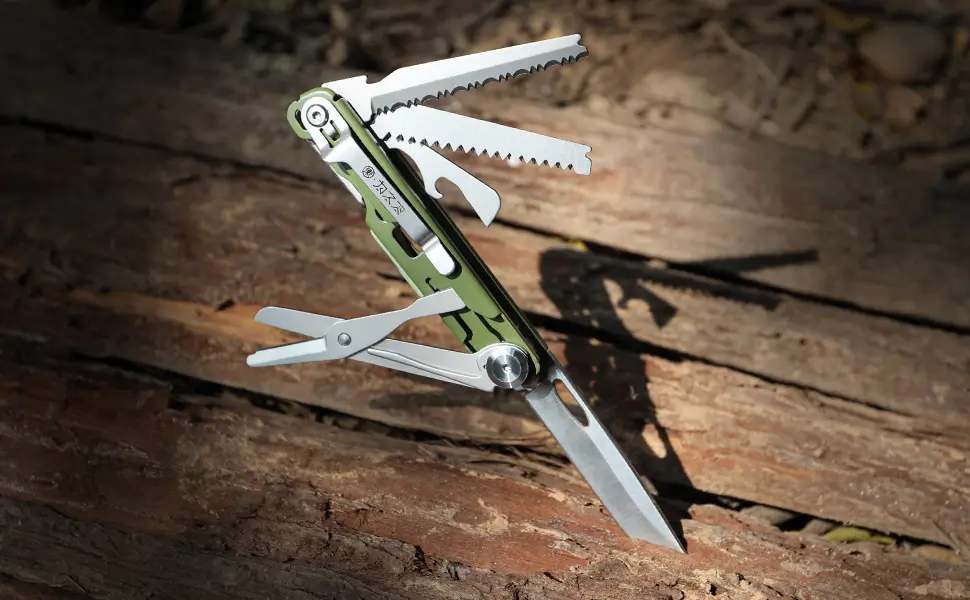Comparing Multitool Knives and Traditional Knives: A Balanced View
Choosing the right knife can feel confusing with many choices. A multitool knife is handy, combining many tools in one. Traditional knives are precise and made for specific jobs, like cutting. Your decision depends on how you want to use it. For example, in 2020, 47.8% of U.S. buyers liked chef’s knives for cooking. Meanwhile, 40.5% chose paring knives for detailed work. These numbers show that different knives have special uses. So, whether for daily tasks or special jobs, knowing your needs helps you pick the best tool.
Key Takeaways
- Traditional knives are great for exact tasks like cooking or crafting.
- Multitool knives have many tools in one small design, good for daily use or outdoor fun.
- Pick the right knife based on your needs—accuracy or flexibility.
- Good quality is important; choose knives with strong materials to last longer.
- Clean and sharpen your knives often to keep them working well.
Advantages of Traditional Knives
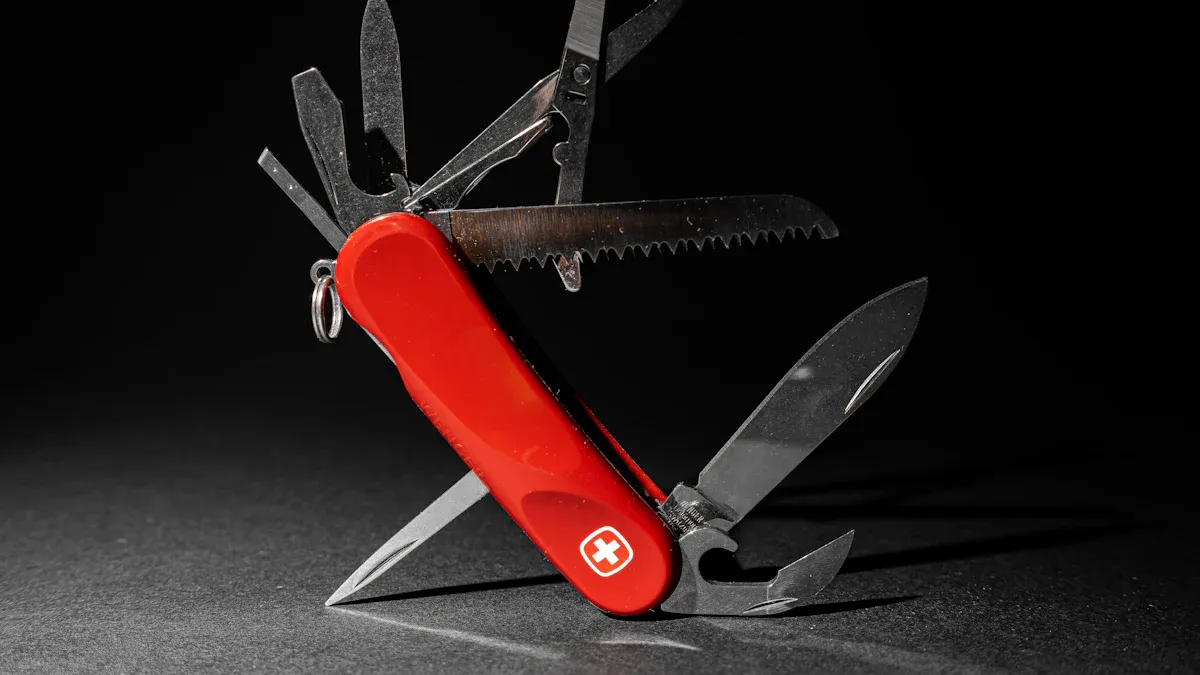
Comparing Multitool Knives
Precision and Specialized Use
Traditional knives are great for precise cutting tasks. Each knife is made for a specific job, like slicing, peeling, or chopping. The blade’s shape and sharpness match its purpose perfectly. For example, a chef’s knife is best for chopping, while a paring knife works well for peeling. Using the right knife makes your work easier and faster.
Did you know? In 2023, the global knife market was worth $4.5 billion. By 2032, it may grow to $7.67 billion. This growth comes from more people wanting high-quality knives for cooking. Precision and special uses are key reasons for this trend.
If you like accuracy and control, choose a traditional knife. It helps you handle even delicate tasks with confidence.
Durability and Longevity
Traditional knives are strong and last a long time. They are often made from materials like stainless steel or carbon steel. These materials resist damage and wear. If you take care of them, they can last for decades. Some people even pass them down in their families!
Unlike multitool knives, traditional knives focus on strength, not versatility. They have fewer parts, so they are less likely to break. Buying a good knife means you’re getting a tool that will last for years.
Ergonomics and Comfort
Comfort is important when using a knife for a long time. Traditional knives are designed to fit well in your hand. This reduces strain and makes cutting easier. The handles are often non-slip, so they stay secure even if your hands are wet.
- Non-slip handles help you keep a firm grip.
- Balanced weight makes cutting easier and more controlled.
Studies show ergonomic knives reduce hand and wrist pain. They are a smart choice for anyone who cooks a lot.
Tip: Pick knives with comfortable handles and balanced designs. They make cooking easier and more fun.
In summary, traditional knives offer precision, strength, and comfort. They are reliable tools for any cutting job. Whether you cook at home or professionally, these knives are a great choice for your kitchen.
Benefits of Multitool Knives
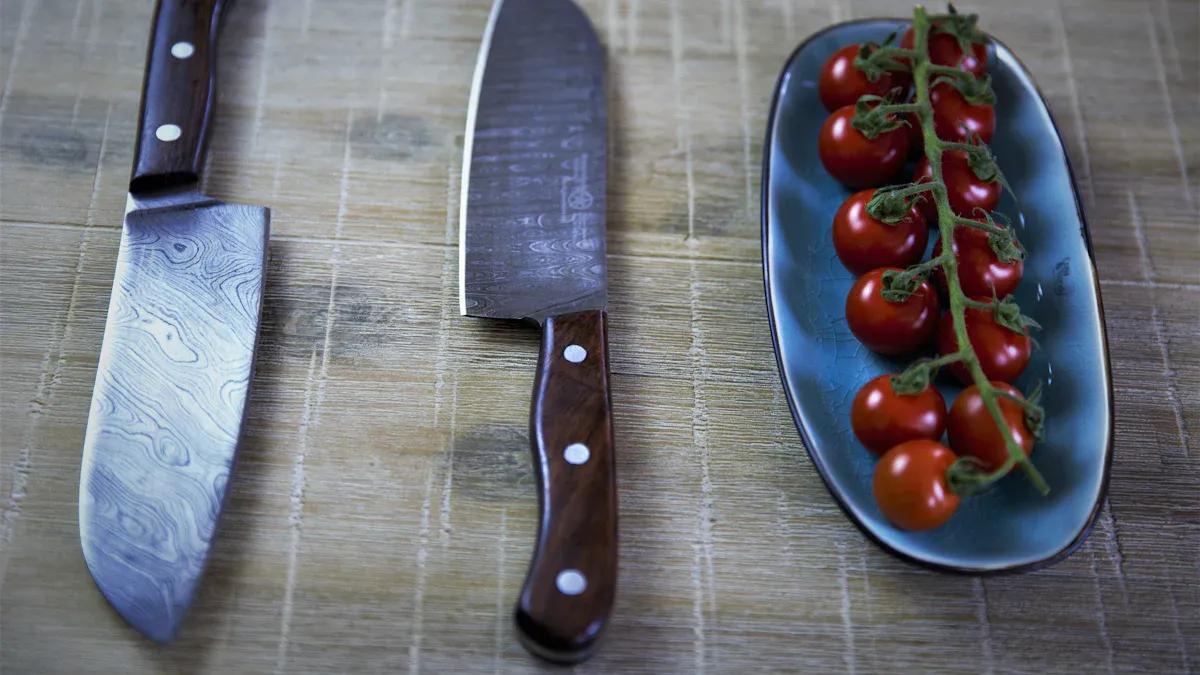
Versatility and Multifunctionality
Comparing Multitool Knives
A multitool knife is like a pocket-sized toolbox. It can do many jobs, from fixing things to cutting ropes. You can use it to tighten screws, open bottles, or handle small repairs. This makes it popular with campers, DIY fans, and even doctors.
Here’s how multitool knives are useful in different situations:
| Feature/Use Case | Description |
|---|---|
| Locking Tools | Makes tools safer and easier to use. |
| Versatile Applications | Works for cooking, survival, medical tasks, and gear care. |
| Compact Design | Packs many tools into a small, easy-to-carry size. |
| TSA-Approved Options | Travel-friendly designs without blades or with removable ones. |
These knives are more than tools—they solve problems in many situations.
Compactness and Portability
Multitool knives are small and easy to carry. They combine many tools into one lightweight design. You can take them hiking, camping, or even on errands. It’s like having a toolbox that fits in your pocket.
Some multitools are tiny enough to attach to a keychain. Even though they’re small, they’re very useful. Some models are TSA-approved, so you can bring them on planes without trouble.
Tip: Choose multitools made from titanium. They’re strong, light, and great for daily use.
Convenience for Everyday Carry
Multitool knives are perfect for everyday use. They’re handy, practical, and ready when you need them. Whether fixing something, opening boxes, or enjoying nature, they’re helpful tools to have.
Here’s why people love them:
- Over half of U.S. homes own at least one multitool.
- Folding blade knives are easy to carry and simple to use.
- By 2030, the multitool market may grow to $3.2 billion due to outdoor and DIY needs.
You can find multitools with features that match your lifestyle. Some even use eco-friendly materials or have extras like LED lights.
Did you know? More than 70% of buyers prefer multitools made from green materials. This trend pushes companies to make better, eco-friendly designs.
In short, multitool knives are more than tools—they’re helpful companions for daily life.
Disadvantages of Both Types
Downsides of Multitool Knives
Multitool knives are useful but have some problems. The tools in them are smaller and less strong than separate tools. For example, the knife blade might not cut as well as a regular knife. The scissors or screwdriver might not handle tough jobs easily. This can be frustrating when the tool doesn’t work as expected.
Another problem is their design. Multitools have many moving parts, which makes cleaning harder. Dirt can get stuck in the hinges, making them stiff. If you don’t clean and oil them often, they might wear out faster.
Tip: For outdoor trips, pick multitools made from strong materials. They last longer and work better.
Drawbacks of Traditional Knives
Traditional knives are strong and precise but not always handy. Each knife is made for one job, so you’ll need several for different tasks. Carrying many knives can feel heavy and inconvenient when traveling.
Unlike multitools, traditional knives don’t have extra features. If you’re camping, you might miss tools like a bottle opener or screwdriver. This limits their usefulness in some situations.
Care and Wear Over Time
Both multitools and traditional knives need regular care to stay useful. Traditional knives need sharpening and must be kept dry to avoid rust. Multitools need oiling and sometimes tightening of screws.
Even the best knives wear out over time. Handles can loosen, blades can dull, and hinges can get stiff. Without proper care, both types of knives may stop working well.
Did you know? Taking care of your knife can make it last years longer. A little effort keeps your tools in great shape.
Choosing the Right Tool for Your Needs
Understanding How You’ll Use It
To pick the right knife, think about your needs. Do you love cooking at home? Or do you enjoy hiking and camping? If you cook often, traditional knives like chef’s or paring knives are best. They are precise and made for specific tasks. But multitool knives are better for outdoor or daily use. They are great when you need a tool that does many things.
Look at your daily activities. Do you open packages, tighten screws, or cut ropes? A multitool can do all these jobs and is easy to carry. However, if you need to slice vegetables or fillet fish, a traditional knife works better. Choosing a knife that fits your lifestyle helps you get the most out of it.
Tip: Write down your common tasks. This will help you decide if you need a multitool or a specialized knife.
Checking Quality and Materials
Good knives are made to last and work well. The quality depends on the materials and how they’re made. For example, some blades are treated to stay sharp longer and resist damage. Special processes like ESR make knives tougher and less likely to chip.
Here’s a simple comparison of knife durability:
| Feature | Valmet Durable Knife System | Traditional Knife |
|---|---|---|
| Knife Change Frequency (Tons) | 6,000-10,000 | 1,000 |
| Lifetime Comparison | About double | N/A |
| Knife Sharpness Retention | Stays sharp | N/A |
Note: Knives made from stainless steel or titanium last longer and perform better.
Balancing Cost and Features
Your budget is important when choosing a knife. High-quality knives may cost more but last longer. This saves money over time because you won’t need to replace them often.
Here are things that affect knife prices:
- Material Costs: Strong materials like titanium cost more but last longer.
- Labor Costs: Handmade knives are pricier because they take more time to make.
- Brand Value: Popular brands or skilled craftsmanship can raise the price.
If you have a small budget, find a knife that balances cost and quality. Compare prices and think about what you need most. A multitool might be better if you want versatility. But for specific tasks, a traditional knife is worth the investment.
Tip: Don’t just look at the price. Think about how often you’ll use the knife and which features matter most.
Picking between a traditional knife and a multitool knife depends on your needs. Traditional knives are great for precise cutting, lasting longer, and feeling comfortable. They work best for tasks like cooking or crafting. Multitools, however, are useful because they combine many tools in one small design. They’re easy to carry and handle different jobs.
Here’s a simple comparison to guide you:
| Feature | Traditional Knives | Multitools |
|---|---|---|
| Precision | Sharp blades for accurate cutting | Less sharp for detailed cutting |
| Versatility | Made for specific tasks | Includes multiple tools for various uses |
| Durability | Strong materials for long-lasting use | Not as tough as single-purpose tools |
| Portability | Can be heavy depending on size | Small and easy to carry |
| Deployment | Quick to use for specific tasks | Takes longer to find the right tool |
Think about how you’ll use your knife. If you enjoy camping or fixing things, a multitool might be better. But if you love cooking or need accuracy, a traditional knife is a smarter choice.
🛠️ Pro Tip: Many knives today focus on being multi-functional and durable. Whether you’re a chef, camper, or DIY fan, there’s a knife made for you.
Take your time to decide. The right knife makes every job easier and more fun.
FAQ
What’s the main difference between a multitool knife and a traditional knife?
A multitool knife has many tools in one small design. It’s great for different tasks. A traditional knife is made for specific jobs, like cooking or crafting, and offers more precision.
Can I use a multitool knife for cooking?
You can, but it’s not the best choice. Multitool knives aren’t as sharp or comfortable as kitchen knives. They’re better for quick, simple tasks, not detailed food prep.
How do I maintain my knife to make it last longer?
Keep your knife clean and dry after using it. Sharpen traditional knives often to keep them effective. For multitools, oil the hinges and tighten screws regularly. This care stops rust and damage.
Are multitool knives allowed on airplanes?
Some multitools without blades or with removable blades are TSA-approved. Always check airline rules before flying to avoid problems at security.
Which knife is better for camping?
A multitool knife is best for camping. It has tools like a screwdriver, bottle opener, and blade in one small tool. It’s great for outdoor tasks.
🛠️ Pro Tip: Pick a knife that fits your activities. Whether it’s cooking, camping, or fixing things, the right knife makes everything easier!

